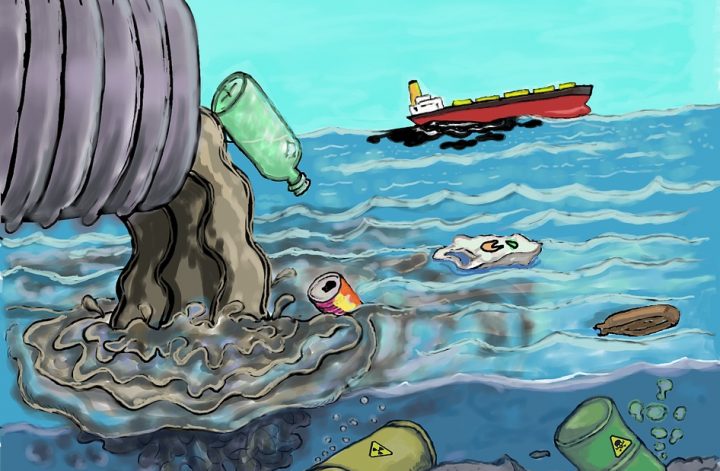Introduction
Water Pollution: The contamination/ impurity of water sources is called water pollution. Water sources are aquifers, oceans, underground water reserves, rivers, lakes, streams, etc. The contamination or impurity includes toxins, heavy metals, synthetic chemicals and microplastics or plastic debris from plastic waste, solids, liquid discharge, etc. Water pollution is the result of contaminants that are released into the natural ecosystem from various sources.
To know more about common water pollutants, kindly read: Sources and Effects of Common Water Pollutants
Sources of Water Pollution – Natural Sources vs. Anthropogenic Sources
There are two sources of water pollution. It could be due to human activities or natural weather events.
Natural Sources
Natural sources of water pollution include natural catastrophic events such as volcanic eruptions, cyclones, tsunami, sea storms, etc. Other natural sources are siltation, floods, animal waste, algae blooms, etc.
Anthropogenic Sources
Anthropogenic sources include human activities that are responsible for water pollution. These human activities are oil spills, fertilizers run-off, application of pesticides, increasing population, sewage sludge, radioactive waste, municipal sewage, industrial wastewater, etc.
Types of Water Pollution – Point Source vs. Non-point Source
There are two main types of water pollution that happen due to point source and non-point source.
Point Source Pollution
Point source pollution is defined as an identifiable or single source of pollution from where the contaminants enter into the natural environment. For example factory smokestack, ships, pies, etc. Examples of point source water pollution are factories, electronics, automobiles, paper, and pulp mills, oil refineries, sewage treatment plants, etc.
Non-point Source Pollution
Non-point source pollution is defined as unlike point source pollution, it does not have a single identifiable source but multiple diffused sources from where the contaminants enter into the water bodies. Examples of no-point water source pollution are run-off from forest land and agricultural activities such as application of insecticides, pesticides, fertilizers, synthetic chemical discharge from energy production, sedimentation from constructions, grease and oil release from urban areas.
Also check out: The Three Stages of Waste Water Treatment
Effects of Water Pollution
Water contaminants enter into the natural cycle of water and show negatives impacts on the natural environment. The dynamic ecosystem is being degraded by increasing water pollution. Marine and freshwater biodiversity is severely impacted by water pollution.
Water contaminants are often toxic in nature and cause biodiversity loss and enter the food chain. Eutrophication is the result of the increased concentration of chemicals in the water bodies that encourage the growth of algae.
In humans consumption of polluted water causes many fatal diseases such as typhoid, hepatitis, cholera, etc.
General Control Measures of Water Pollution
Water pollution can be controlled from a number of control and preventive measures.
- Wastewater containing detergents should not be discharged directly into waterways.
- Regular monitoring of freshwater sources including groundwater reserves should be carried out.
- Industrial wastewater should be treated before releasing into water bodies.
- Synthetic chemicals should be disposed of properly.
- The excessive application of fertilizers should be discouraged.
Also read this interesting article: Now Water Pollution Can Be Cleaned Up Using Sunlight
Conclusion
The world is facing water crisis issues due to depleted water reserves. Climate change is affecting water sources. Human activities are a major contributor to water pollution. There is less availability of potable water because of water contamination. Water pollution shows negative impacts on the whole ecosystem. Preventive measures should be adopted to reduce water contamination.
Also check out: Eutrophication – Causes, Effects, and Solutions
I hope you all liked this post! Please comment below if you have any suggestions, comments, or feedback! We at #envpk love hearing from our readers! Thanks!




